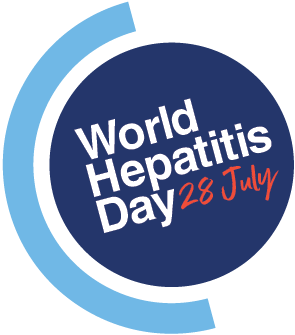奥克拉荷马州郊狼中查菲埃里希体的自然感染
Alan Kocan,Gena Crowder Levesque,Lisa C. Whitworth
Chinese Translations - 中文译本 > Volume 6 - 第6卷
著王国庆译
运用巢式PCR检测奥克拉荷马州中部及中北部的郊狼(Canis lantrans)血液样本中查菲埃里希体(Ehrlichia chaffeensis),犬埃里希体(E canis)和艾文埃里希体(E ewingii)的DNA 。在检测的21只郊狼中,15只(71%)查菲埃里希体DNA阳性,未查到犬埃里希体和艾文埃里希体DNA 阳性者。结果表明,在奥克拉荷马州的郊狼中,查菲埃里希体感染非常普遍,这些郊狼在人类单核细胞埃里希体病的流行病学中可能起重要的作用。
人单核细胞埃里希体病一种由查菲埃里希体引起的蜱传人兽共患病,在美国南部、中南部以及中大西洋地区发生很多。其主要传播媒介是长星蜱(即美洲顿眼蜱),美洲顿眼蜱与人类单核细胞埃里希体病之间的联系已有报道。主要的野生保存宿主是白尾鹿(Odocoileus virginianas)。事实上,对于蜱的存在与鹿中查菲埃里希体抗体之间的地理以及 时间关系已有研究。尽管从和佐治亚州查到血清反应阳性的浣熊和负鼠,康涅狄格州也查到血清反应阳性的白足鼠,依然没有别的动物被认为与该病的流行有关。另 外,在实验条件下,红狐也对该病易感。虽然也有报道其它的哺乳动物对该病原体易感,但是关于动物自然感染的报道并不一致。家犬不论在自然条件还是实验条件 下均对查菲埃里希体易感。
方法与研究设计
为了确活动范围广的郊狼是否是查菲埃里希体、犬埃里希体以及艾文埃里希体的保存宿主,我们用巢式聚合酶链反应方法调查了从奥克拉荷马州中部和中北部得到的21只郊狼血液标本中这三种微生物的DNA存在情况。在一个已证实有美洲顿眼蜱的地区利用动物损害控制计划(美国农业部)的一部分获得郊狼标本。该地区鹿中普遍存在查菲埃里希体,而且在狗中也发现了查菲埃里希体、犬埃里希体和艾文埃里希体。一旦射杀到郊狼,立刻取其全血标本用EDTA抗凝,用于DNA的分离和PCR分析。于4℃血液标本保存直至检测。采用QIAamp血液试剂盒(Qiagen, Santa Clarita, CA),按照说明书要求,从200μl血液中分离DNA。
每个血样中纯化的DNA分别用HE1、HE3、EE5和ECAN5四种引物进行扩增,反应条件的详细描述见图1。对于DNA测序,先进行PCR扩增,产物经琼脂糖凝胶电泳分离后。用灭菌的加样枪头插刺电泳区带数次,再将该枪头放入PCR反应体系中作为模板。收集反应液,用Qiagen Qiaquick公司的 PCR纯化试剂盒依照说明书进行纯化。在奥克拉荷马州立大学重组DNA与蛋白质研究所(Stillwater, OK),采用Applied Biosystems公司的 (Foster City, CA)373A型自动DNA测序仪完成测序。采用MacVector软件(Oxford Molecular Group, Inc., Campbell, CA)进行序列分析。对查菲埃里希体阳性对照和一只阳性郊狼中扩增出来的390bp的片段两端进行了部分测序(300bp),并将我们测得的序列与存于基因库中的序列相比较,以确定扩增的是查菲埃里希体DNA。
(PFGE graphic to come)
图1. 9号至11号郊狼血标本中查菲埃里希体nss RNA基因PCR扩增结果的琼脂糖凝胶电泳分析。
图中:第一孔是阴性对照(没有DNA);第二孔至第四孔分别是第9号至第11号郊狼血标本;第五孔是阳性对照(查菲埃里希体感染的DH82细胞)。M是100bp的DNA梯度(Life Technologies, Rockville, MD)。
埃里希体属上游引物ECC(5'-AGAACGAACGCTGGCGGCAAGC-3')和下游引物ECB(5'-CGTATTACCGCGGCTGCTGGCA-3')扩增埃里希体属的所有种。该反应体系(50μl)中包括10μl模板DNA(溶于pH8.3 10μM Tris-盐酸),0.2mM各种脱氧三磷酸核苷(dNTP),2 mM MgCl2,50mM KCl,0.5μM的各种引物,以及1.25单位的Taq DNA聚合酶(Promega Corporation, Madison, WI)。运用热启动PCR进行,先于94℃变性3min后再加入酶。反应进行30个循环,每循环包括94℃变性1min,65℃退火2 min,72℃延伸2min。该反应产物作为模板,分别用3对种特异性引物进行巢式PCR分析。引物HE1(5'-CAATTGCTTATAACCTTTTGGTTATAAAT-3')和HE3(5'-TATAGGTACCGTCATTATCTTAAATAT-3')用来特异性扩增查菲埃里希体;引物ECAN5(5'-CAATTATTTATAGCCTCTGGCTATAGGA-3')和HE3用来特异性扩增犬埃里希体;引物EE5(5'-CAATTCCTAAATAGTCTCTGACTATTTAG-3')和HE3用来特异性扩增艾文埃里希体。反应体系(50μl)中包括用引物ECC和ECB进行的PCR扩增产物所作的模板(10μl),其余成分与前者相同。运用热启动PCR进行,先于94℃变性3min后再加入酶。种特异性引物的反应分两个阶段,第一阶段:94℃变性1min,55℃退火2 min,72℃延伸1.5min,共3个循环。第二阶段为37个循环,每循环92℃变性1min,55℃退火2 min,72℃延伸1.5min。去离子蒸馏水作阴性对照,阳性对照DNA样本从感染查菲埃里希体的DH82细胞、实验感染犬埃里希体的狗血、实验感染艾文埃里希体的狗滑液经过通用引物PCR扩增后产物的稀释物中纯化而得。为了防止样品污染,DNA的纯化、加样、扩增等分别在不同的房间里进行。为了更小心,使用阳性样品专用加样枪以及不产生气溶胶的加样头。
结果与讨论
在检测的21只郊狼中,15只查菲埃里希体PCR分析阳性,未见犬埃里希体和艾文埃里希体阳性者。据我们所知,这是关于郊狼中查菲埃里希体自然感染证据的首篇报道,也是在白尾鹿之外的活动范围广的哺乳动物中基于PCR的首批证据。虽然这些研究结果并不否定白尾鹿对查菲埃里希体的保存作用,但它们指出郊狼是一种重要的保存宿主。
美洲顿眼蜱在各阶段均可寄生于郊狼,而且白尾鹿和郊狼在有查菲埃里希体美洲顿眼蜱的该疾病流行的很多美国地区同时出现。这些鹿的活动范围,根据离居住地的远近来看(通常不足1.6 Km),要比郊狼的活动范围(可超过31 Km)局限。郊狼的这些行为因素,加上对查菲埃里希体的明显易感性,使其成为蜱传病原体在野生动物之间传播的中间桥梁,也成为那些将来可能寄生于其它宿主(包括人和家畜)的蜱获得感染的来源。
尽管本研究所调查的郊狼数量有限,结果仍可提示:在本研究涉及的地 区,郊狼对于保存和传播查菲埃里希体之外的那些广泛寄生于人类和家畜的埃里希体起着微不足道甚至于无的作用。实验条件下,郊狼对犬埃里希体易感,也有资料 表明,奥克拉荷马州的家犬及蜱自然感染查菲埃里希体、犬埃里希体和艾文埃里希体。最近在密苏里州的一些病人身上分离出艾文埃里希体的DNA,这扩大了该微生物的已知宿主范围,使其成为一种与有关人类健康的新出现的人兽共患病。
埃里希体在奥克拉荷马州家犬和蜱中的存在,宿主美洲顿眼蜱(其自然媒介)的广泛分布,以及美洲顿眼蜱在野生和家养犬科动物中普遍存在,揭示将来该微生物在家畜、野生动物和人类之间相互传播的可能性。
References
- Eng TR, Harkess JR, Fishbein DB, Dawson JE, Greene CN, Rredus MA, et al. Epidemiologic, clinical and laboratory findings of human ehrlichiosis in the United States,1988. JAMA 1990;264:2251-8.
- Dawson JE, Childs JE, Biggie KL, Moore C, Stallknecht DE, Shaddock J, et al. White-tailed deer as a potential reservoir for Ehrlichia chaffeensis, the etiologic agent of human ehrlichiosis. J Wildl Dis 1994;30:162-8.
- Ewing SA, Dawson JE, Kocan AA, Barker RW, Warner CK, Panciera RJ, et al. Experimental transmission of Ehrlichia chaffeensis (Rickettsiales: Ehrlichieae) among white-tailed deer by Amblyomma americanum (Acari: Ixodidae). J Med Entomol 1995; 32:368-74.
- Lockhart JM, Davidson WR, Dawson JE, Stallknecht DE, Howerth EW. Isolation of Ehrlichia chaffeensis from wild white-tailed deer (Odocoileus virginianus) confirms their role as natural reservoir hosts. J Clin Microbiol 1997;35:1681-6.
- Lockhart JM, Davidson WR, Dawson JE, Stallknecht DE, Little SE. Natural history of Ehrlichia chaffeensis in the Piedmont physiographic province of Georgia. J Parasitol 1997;83:887-94.
- Lockhart JM, Davidson WR, Dawson JE, Stallknecht DE. Temporal association of Amblyomma americanum with the presence of Ehrlichia chaffeensis reactive antibodies in white-tailed deer. J Wildl Dis 1995;31:119-24.
- Magnarelli LA, Anderson AF, Stafford KC, Dumler JS. Antibodies to multiple tick-borne pathogens of babesiosis, ehrlichiosis, and Lyme borreliosis in white-footed mice. J Wildl Dis 1997;33:466-73.
- Davidson WR, Lockhart JM, Stallknecht DE, Howerth EW. Susceptibility of red and gray foxes to infection by Ehrlichia chaffeensis. J Wildl Dis 1999;35:696-702.
- Telford SR, Dawson JE. Persistent infection of C3H/HeJ mice by Ehrlichia chaffeensis. Vet Microbiol 1996;52:103-12.
- Lockhart JM, Davidson WR, Stallknecht DR, Dawson JE. Lack of seroreactivity to Ehrlichia chaffeensis among rodent populations. J Wildl Dis 1998;34:392-6.
- Dawson JE, Ewing SA. Susceptibility of dogs to infection with Ehrlichia chaffeensis, causative agent of human ehrlichiosis. Am J Vet Res 1992;53:1322-7.
- Dawson JE, Biggie KL, Warner CK, Cookson K, Jenkens S, Levine JF, et al. Polymerase chain reaction evidence of Ehrlichia chaffeensis, an etiologic agent of human ehrlichiosis, in dogs from southeast Virginia. Am J Vet Res 1996;57:1175-9.
- Murphy GL, Ewing SA, Whitworth LC, Fox JC, Kocan AA. A molecular and serologic survey of Ehrlichia canis, E. chaffeensis, and E. ewingii in dogs and ticks from Oklahoma. Vet Parasitol 1998;79:325-39.
- Hair JA, Bowman JL. Behavioral ecology of Amblyomma americanum (L.). In: Sauer J, Hair JA, editors. Morphology, physiology, and behavioral biology of ticks. New York: Ellis Horwood Limited;1986. p. 406-27.
- Cooley RA, Kohls GM. The genus Amblyomma (Ixodidae) in the United States. J Parasitol 1944;30:77-111.
- Dawson JE, Warner CK, Baker V, Ewing SA, Stallknecht DE, Davidson WR, et al. Ehrlichia-like 16S rDNA from wild white-tailed deer (Odocoileus virginianus). J Parasitol 1996;82:52-8.
- Anderson BE, Sumner JW, Dawson JE, Tzianabos T, Green CR, Olson JG, et al. Detection of the etiologic agent of human ehrlichiosis by polymerase chain reaction. J Clin Microbiol 1992;30:775-80.
- Dawson JE, Stallknecht DE, Howerth EW, Warner C Biggie K, Davidson WR, et al. Susceptibility of white-tailed deer (Odocoileus virginianus) to infection with Ehrlichia chaffeensis, the etiologic agent of human ehrlichiosis. J Clin Microbiol 1994;32:2725-8.
- Wilton SD, Lim L, Dye D, Laing N. Bandstab: a PCR-based alternative to cloning PCR products. BioTechniques 1997;22:642-5.
- Kocan AA, Breshears M, Cummings C, Panciera RJ, Ewing SA, Barker RW. Naturally occurring hepatozoonosis in coyotes from Oklahoma. J Wildl Dis 1999;35:86-9.
- Baker RH. Origin, classification, and distribution. In: Halls L, editor. White-tailed deer. ecology and management. Harrisburg, PA: Stackpole Books;1984. p. 1-18.
- Nowak RM. Walker's mammals of the world (5th ed). Baltimore: The John Hopkins University Press;1991. vol. 2. p. 1068-70.
- Patrick CD, Hair JA. White-tailed deer utilization of three different habitats and its influence on lone star tick populations. J Parasitol 1978;64:1100-6.
- Bloemer SR, Zimmerman RH. Ixodid ticks on the coyote and gray fox at Land-Between-the-Lakes, Kentucky-Tennessee, and implications for tick dispersal. J Med Entomol 1988;25:5-8.
- Morchonton RL, Hirth DH. Behavior. In: Halls L, editor. White-tailed deer: ecology and management. Harrisburg, PA: Stackpole Books;1984. p. 129-68.
- Ewing SA, Buckner RG, Stringer BG. The coyote, a potential host for Babesia canis and Ehrlichia sp. J Parasitol 1964;50:704.
- Buller RS, Arens M, Hmiel SP, Paddock CD, Sumner JW, Rikihisa Y, et al. Ehrlichia ewingii, a newly recognized agent of human ehrlichiosis. N Engl J Med 1999;341:148-55.
- Anziani OS, Ewing SA, Barker RW. Experimental transmission of a granulocytic form of the Tribe Ehrlichieae by Dermacentor variabilis and Amblyomma americanum to dogs. Am J Vet Res 1990;51:929-31.





